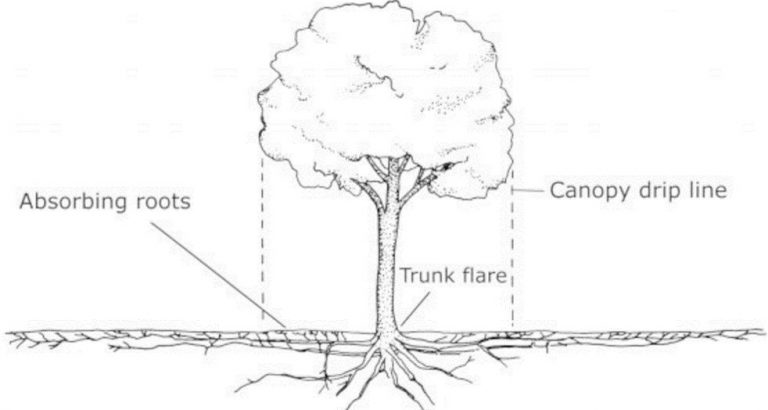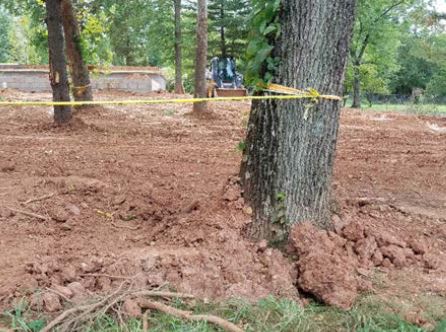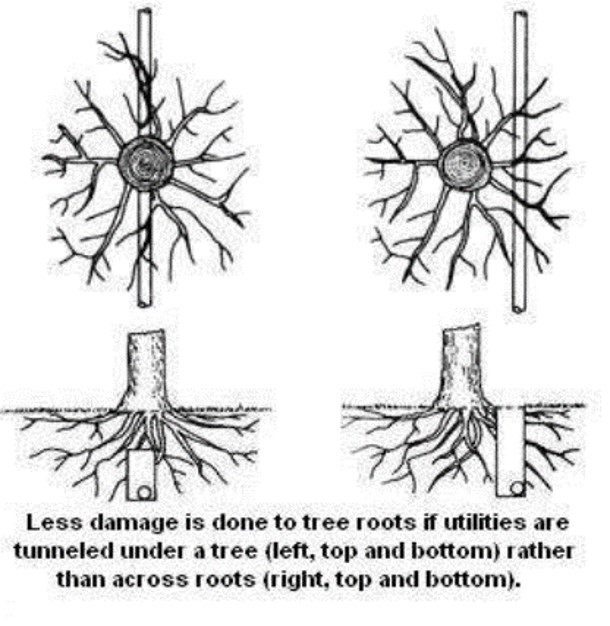The Root of the Problem: Roots and Construction
By Gerry Bates
IDL Southern Idaho Community Forestry Assistant

Construction or landscaping activities that cut the roots of mature trees or compact the soil around trees will often lead to death of all or part of the tree. This damage may not be visible for as long as two years after the damage was done and the injurious activity is forgotten. By far, the most common and serious root injuries we inflict on mature trees are from changing the soil’s aeration.
Adding soil, even as little as a few inches, over the existing surface places the major root mass that much deeper. With less oxygen, the roots may die quickly, and unless new roots can be rapidly produced in the surface soil, the tree will die. Soil compaction has the same effect, reducing the soil’s air supply plus creating a physical barrier for new root growth.

Recreation and construction areas that receive regular foot or vehicle traffic are prone to compaction. Keep in mind that tree roots do not respect property lines. The effects of these activities in one area may affect your neighbor’s trees, and vice versa. The soil ecosystem’s health is key to your tree’s overall health. Soil compaction from construction can result in the reduction of soil pore space. Smaller pore spaces in the soil causes a reduction of oxygen and water available to the roots and can lead to a decline in tree health and eventual failure.
Damage to tree roots during construction or landscaping activities can happen quite easily. Most of the important fine absorbing roots for mature trees are located within the first 6 inches of the soil profile. These important roots typically extend beyond the tree’s canopy and are often damaged during landscaping or construction activities.

Root damage is most common when utility companies trench near trees to install new lines or to repair existing underground lines. The amount of damage to the tree depends on the proximity of the damage to the root collar and the percentage of root loss. Severing one major root can kill 15-25% of the entire root system.
Severe root loss during construction can result in a decline in overall tree health and appearance. Symptoms from construction damage often occur over several years after the initial trenching or construction and can lead to whole tree failure. Tunneling under the roots using a trenchless device is a good solution to avoid damaging tree roots.

